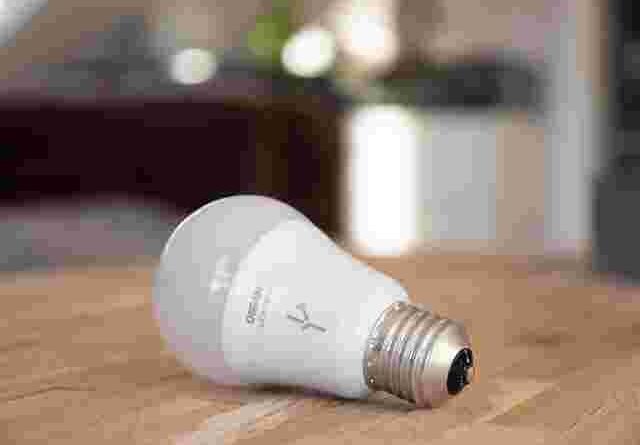Developing an Internet of Things-Based Application
Devices designed to collect information are characterized by:
– Extremely low levels of power consumption;
– Wireless transmitters to support communication;
– Primitive embedded OS.
In most cases, the purchase of such equipment is not included in the list of tasks for the developer, since all the popular platforms for the development of Internet of Things applications are integrated with some physical and virtual tools for the collection of necessary data.
Select centralized data storage. A cloud or similar centralized repository is ideal for the accumulation, systematization, and further analysis of collected data. In particular, cloud solutions are ideal from the point of view of providing efficient data transmission over low-speed networks.
Develop the server-side of data-handling algorithms. To sort and analyze the collected information, IoT application development platforms offer extensive functionality that allows for the creation of a high-performance, intelligent, and scalable backend.
Create a front end. Almost all modern platforms for the development of Internet of Things applications allow for the creation of full-featured, user-friendly front-end application interfaces with advanced search functions and intuitive structures.
Development from scratch: choosing the best options to develop IoT apps
To help develop IoT apps from scratch, many special platforms have been created over the last few years. Below, we have listed the most popular, which will allow you to create your Internet of Things application as quickly as possible.
The Top Five Tools to Build an Internet of Things Application :
1. Azure IoT Suite:
Azure IoT Suite is an incredibly popular software package from Microsoft, specifically created for the simple integration of information collection devices into a consolidated system for transferring, storing, analyzing and processing data. Thanks to cloud architecture, the Azure IoT Suite provides access to a reliable and scalable storage bank of large volumes of information. Microsoft Azure Cloud is also supplemented with an extensive list of advanced services, including Azure IoT Hub (for device-to-cloud and cloud-to-device messaging), Azure Stream Analytics (for data sorting), Azure Storage, Azure Cosmos DB (for secure metadata storage and management of assembler devices), and Azure Web Apps Microsoft Power BI (for the creation of frontends).
2. Amazon Web Services:
It’s no news that one of the world’s largest trading platforms has introduced special tracking chips that allow for monitoring the location of goods at any stage of their delivery. To provide efficient data exchange between chips and hardware such as PCs, Amazon Web Service was developed in 2006, which is a full-fledged infrastructure of agnostic platforms, including file hosting, cloud computing, virtual servers, and much more. The main advantages of this solution for the Internet of Things app development include increased security (in compliance with DSS, FISMA, HIPAA, and many other specifications), flexibility (thanks to the support of agnostic protocols), and adaptability (due to its cloud architecture).
3. IBM Watson:
The artificial intelligence-based IBM Watson software implements support for a reliable relationship between information collection devices, servers, and user parts of the developed applications. Creating such an application with the help of IBM Watson services is really simple. Thanks to the advanced functionality that allows for quick connection of gateways and data collection equipment, thoughtful storing and processing algorithms, real-time analysis instruments, and advanced security measures, this set of intuitive tools allows for the quick creation of enterprise-level Internet of Things applications. IBM Watson services are available on the popular IBM Bluemix platform – cloud-based Paas based on SoftLayer infrastructure, with support for Python, Java, Swift, Ruby, Node.js, PHP, and other equally popular development languages and frameworks.
4. Oracle IoT:
Oracle IoT is one of the leading software solutions for the development of Internet of Things applications, built over one of the most flexible programming environments – Oracle. Based on cloud computing technologies, applications created with Oracle IoT have a whole host of advanced capabilities, including device virtualization, high-speed messaging, endpoint management, stream processing, data enrichment, event storage, REST API support, and enterprise connectivity. These are just a few of the Oracle IoT features and are by no means an extensive list. In 2017, this platform was complemented with new products: IoTAsset Monitoring Cloud, IoT Fleet Monitoring Cloud, IoT Production Monitoring Cloud, and IoT Connected Worker Cloud, designed to solve a number of business tasks and improve the process of converting data into a user-friendly form.
5. KAA IoT:
The open-source KAA IoT platform offers an incredibly rich toolkit for developing IoT applications, embodying best practices for software creation. KAA IoT has a lot of advanced features; among them, a well-thought-out functionality for the adjustment of mobile device compatibility, flexible management of an unlimited number of sensors for the collection of information through an SDK server, real-time sensor monitoring, cloud services, automation of software updates, automated user personal device settings distribution, etc. All these features, when combined, make KAA IoT one of the most advanced products for the development of this kind of software.

